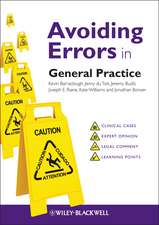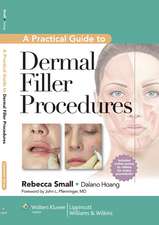Contemporary Nephrology: Volume 2
Editat de Saulo Klahren Limba Engleză Paperback – 12 oct 2012
Preț: 395.45 lei
Preț vechi: 416.26 lei
-5% Nou
Puncte Express: 593
Preț estimativ în valută:
75.67€ • 78.07$ • 63.15£
75.67€ • 78.07$ • 63.15£
Carte tipărită la comandă
Livrare economică 27 martie-10 aprilie
Preluare comenzi: 021 569.72.76
Specificații
ISBN-13: 9781461567240
ISBN-10: 1461567246
Pagini: 824
Ilustrații: XXVI, 794 p.
Dimensiuni: 152 x 229 x 43 mm
Greutate: 1.08 kg
Ediția:Softcover reprint of the original 1st ed. 1983
Editura: Springer Us
Colecția Springer
Locul publicării:New York, NY, United States
ISBN-10: 1461567246
Pagini: 824
Ilustrații: XXVI, 794 p.
Dimensiuni: 152 x 229 x 43 mm
Greutate: 1.08 kg
Ediția:Softcover reprint of the original 1st ed. 1983
Editura: Springer Us
Colecția Springer
Locul publicării:New York, NY, United States
Public țintă
ResearchCuprins
1 Membrane Transport: Ion Transport in the Kidney and Anuran Epithelia—Mechanisms of Aldosterone Action.- 1. Introduction.- 2. The General Effects of Aldosterone.- 2.1. General Effects of Aldosterone in Anuran Epithelia.- 2.2. General Effects of Aldosterone in the Nephron.- 2.3. General Effects of Aldosterone on Other Mammalian Epithelia.- 3. Mechanisms for the Regulation of Epithelial Ion Transport.- 3.1. The Transport of Sodium Ions.- 3.2. The Transport of Potassium Ions.- 3.3. Proton Transport.- 4. Advances in Explaining the Mechanism of Aldosterone Action.- 4.1. Effect of Aldosterone on Metabolism.- 4.2. Effect of Aldosterone on Na, K-ATPase.- 4.3. Effects of Aldosterone on Ionic Conductances.- 4.4. Effects of Aldosterone on the Synthesis of Specific Proteins.- 4.5. Effects of Aldosterone on Plasma Membranes and Lipid Metabolism.- 5. Summary.- References.- 2 Renal Hemodynamics and Sodium Chloride Excretion.- 1. Autoregulation of Renal Blood Flow and Glomerular Filtration Rate.- 2. Factors That Influence Renal Hemodynamics.- 2.1. Neural Control.- 2.2. Vasoactive Agents.- 3. Sodium Excretion.- 3.1. Aldosterone in the Regulation of Sodium Excretion.- 3.2. Neural Reflex Control of Sodium Excretion.- 3.3. Intrarenal Hormone Action on Sodium Excretion.- 3.4. Physical Factors in the Regulation of Sodium Excretion.- 4. Chloride Transport.- References.- 3 Renal Metabolism.- 1. Introduction.- 2. Methodological Considerations.- 2.1. The Isolated Perfused Rat Kidney.- 2.2. Isolated Renal Tubules from Proximal and Distal Segments.- 2.3. Brush Border and Basolateral Membrane Preparations.- 2.4. Renal Cell Culture Techniques.- 2.5. Nuclear Magnetic Resonance (NMR).- 3. Biochemistry of Tubular Transport.- 3.1. Mechanisms of Transport.- 3.2. Relationships to Oxidative Metabolism.-4. Selected Aspects of Intermediary Metabolism.- 4.1. Role of Calcium and Calcium Transport.- 4.2. H+ and Intracellular pH.- 4.3. Gluconeogenesis.- 5. Coupling of Active Ion Transport and Aerobic Metabolism.- 6. Renal Lipid Metabolism.- 6.1. Fatty Acid Metabolism.- 6.2. Triacylglycerol (TG).- 6.3. Complex Lipids.- 6.4. Cholesterol.- 7. Hormones and the Kidney.- 7.1. Sites of Action along the Nephron.- 7.2. Steroid Hormones.- 7.3. Mechanism of Action—Aldosterone.- References.- 4 Renal Prostaglandins.- 1. Biochemistry of Renal Prostaglandins.- 1.1. Localization of Prostaglandin Synthesis.- 1.2. The Lipoxygenase Pathway.- 1.3. Renal Phospholipase.- 1.4. Prostaglandin Degradation.- 2. The Role of Prostaglandins in the Control of Renal Blood Flow and Glomerular Filtration Rate.- 2.1. Renal Prostaglandins and the Control of Renal Blood Flow and Glomerular Filtration Rate in the Rat.- 2.2. The Importance of Renal Prostaglandins in the Control of Renal Blood Flow during Sodium Depletion.- 2.3. Prostaglandins as Regulators of Renal Blood Flow after Reduction of Cardiac Output or in Hepatic Disease.- 2.4. Cyclooxygenase Inhibitors in the Presence of Renal Insufficiency.- 2.5. Summary.- 3. The Interrelations between Antidiuretic Hormone and Prostaglandins.- 3.1. Introduction.- 3.2. The Physiologic Interactions of Antidiuretic Hormone and Prostaglandins.- 3.3. Vasopressin and Renal Prostaglandin Synthesis.- 3.4. Effects of Prostaglandins on Urea Permeability.- 3.5. The Possible Interactions of Prostaglandins with Vasopressin-Stimulated Adenylate Cyclase and Intracellular Cyclic AMP.- 3.6. Polyurie States, Diseases of Urinary Concentrating Mechanisms and the Role of Prostaglandins.- 4. Renal Prostaglandin Synthesis and Sodium Excretion.- 4.1. Introduction.- 4.2. Sodium Intake asa Determinant of Prostaglandin Excretion.- 4.3. Cyclooxygenase Inhibition and Na Excretion.- 4.4. Cyclooxygenase Inhibitors and Diuretics.- 5. Prostaglandins and Renin Secretion by the Kidney.- 5.1. In Vitro Studies of Prostaglandins and Renin.- 5.2. In Vivo Studies of Prostaglandin Infusion and Renin Release.- 5.3. The Effect of Cyclooxygenase Inhibitors on Renin Secretion in Vivo.- 5.4. Prostaglandins, Renin, Potassium, and Bartter’s Syndrome.- 6. Renal Prostaglandins and Thromboxane: A Possible Role in Hypertension.- 6.1. Renal Prostaglandin and Thromboxane Synthesis in Experimental and Human Hypertension.- 6.2. The Effects of Cyclooxygenase Inhibitors on Blood Pressure.- 7. The Role of Prostaglandins and Thromboxane in the Renal Response to Diverse Injuries.- 7.1. Ureteral Obstruction.- 7.2. The Role of Thromboxane in the Potassium-Depleted Rat Kidney and in Acute Renal Failure.- 7.3. Platelet Thromboxane and Vascular Prostacyclin in Renal Failure.- 7.4. Interactions of the Renal Kallikrein-Kinin System with Prostaglandins.- References.- 5 Acid-Base Physiology and Pathophysiology.- 1. Bicarbonate Reabsorption and Its Regulation.- 1.1. Mechanism.- 1.2. Factors That Regulate Bicarbonate Reabsorption.- 2. Acid Excretion and Its Regulation.- 2.1. Ammonia Production and Ammonium Excretion.- 2.2. Role of Aldosterone and Potassium.- 2.3. Role of Other Steroid Hormones.- 2.4. Role of Distal Sodium Delivery and Transport.- 3. Urinary PCO2 as an Index of Distal Acidification.- 3.1. Urinary PCO2 during Sodium Bicarbonate Loading.- 3.2. Urine PCO2 during Neutral Sodium Phosphate Infusion.- 4. Acidification by Epithelial Membranes Analogous to the Mammalian Collecting Duct.- 4.1. Nature of the Proton Pump.- 4.2. Factors That Regulate Proton Secretion.- 5. Role of ParathyroidHormone, Calcium, and Vitamin D on Acid-Base Homeostasis.- 6. Clinical Syndromes.- 6.1. Current Concepts of the Pathogenesis of Distal Renal Tubular Acidosis (DRTA).- 6.2. “Secretory” DRTA.- 6.3. “Back-Leak” DRTA.- 6.4. Distal RTA with Intact Capacity to Lower Urinary pH (Rate-Dependent DRTA).- 6.5. Hyperkalemic DRTA.- 6.6. Selective Aldosterone Deficiency (SAD) (“Type IV RTA”).- 6.7. Aldosterone Resistance.- 7. Diagnosis and Treatment.- References.- 6 Mineral Metabolism in Health and Disease.- 1. Parathyroid Hormone.- 1.1. Biosynthesis of PTH.- 1.2. Regulation of PTH Secretion.- 1.3. Regulation of PTH Secretion in Hyperparathyroidism.- 1.4. Metabolism of PTH.- 1.5. Pitfalls in the Interpretation of the Immunoassay for PTH.- 1.6. Parathyroid Hormone: Renal Effects.- 1.7. PTH as a Uremic Toxin.- 2. Calcium and Magnesium: Physiology and Pathophysiology.- 2.1. Renal Handling of Magnesium.- 2.2. Renal Handling of Calcium.- 2.3. Hypercalcemia.- 2.4. Hypocalcemia.- 3. Phosphate Physiology and Pathophysiology.- 3.1. Gastrointestinal Absorption.- 3.2. Renal Handling of Phosphate.- 3.3. Hypophosphatemia.- 3.4. Hyperphosphatemia.- 4. Renal Osteodystrophy.- 4.1. Pathogenesis.- 4.2. Diagnosis.- 4.3. Therapy.- References.- 7 Renal Vascular Hypertension.- 1. Introduction.- 2. Incidence.- 3. Pathophysiology.- 4. Clinical Expression.- 5. Diagnostic Considerations.- 5.1. Intravenous Pyelography.- 5.2. Radioisotope Renography.- 5.3. Digital Subtraction Angiography.- 5.4. Plasma Renin Activity.- 5.5. Angiotensin Competitive Antagonists.- 6. Results of Surgery.- 7. Percutaneous Transluminal Angioplasty.- 8. Medical Therapy in Renovascular Hypertension.- 9. Renal Function: The Effect of Therapy.- 10. Conclusion.- References.- 8 Noninvasive Diagnostic Techniques in Nephrology:Recent Developments.- 1. Introduction.- 2. Microscopic Examination and Dip Tests of the Urine.- 2.1. Leukocyte Esterase Dip Test.- 2.2. Hematuria.- 2.3. Fluorescent-Y-Body Urine Cytology.- 3. Urine Indices and Excretion Products.- 3.1. Fractional Electrolyte Excretion.- 3.2. Renal Tubular Antigen.- 3.3. ?-2-Microglobulin.- 3.4. Urine Immunoreactive Thromboxane B2.- 4. Radioisotope Techniques.- 4.1. Renography.- 4.2. Renal Function Studies.- 4.3. Isotope Imaging.- 5. Sonography.- 5.1. Renal Size and Obstructive Uropathy.- 5.2. In Utero Renal Abnormalities.- 5.3. Renal and Juxtarenal Masses.- 5.4. Renal Vascular Problems.- 5.5. Other Renal Pathology.- 6. Radiography.- 7. Computed Tomography.- 7.1. Tumors and Masses.- 7.2. Renal Trauma.- 7.3. Renal Dysfunction.- 7.4. Renal Vascular Disorders.- 7.5. Dynamic Data.- 8. Digital Subtraction Angiography.- 9. Nuclear Magnetic Resonance.- References.- 9 Immunological Aspects of Renal Disease.- 1. Introduction.- 2. Immune-Complex-Mediated Glomerulonephritis.- 2.1. Basic Investigations.- 2.2. Autologous Immune Complex Glomerulonephritis.- 2.3. Murine Systemic Lupus Erythematosus.- 2.4. Circulating Immune Complexes.- 3. Complement and Renal Diseases.- 4. Coagulation in Renal Disease.- 5. Cell-Mediated Immunity in Renal Disease.- 6. Mechanisms of Proteinuria.- 6.1. Basic Studies.- 6.2. Clinical Aspects of Asymptomatic Proteinuria and/or Hematuria.- 7. Studies of Glomerular Structure and Function.- 7.1. Structural Studies.- 7.2. Tissue Culture.- 7.3. Fundamental Studies.- 8. Clinical Studies of Renal Disease.- 8.1. Nephrotic Syndrome.- 8.2. Multisystem and Hereditary Disease.- 8.3. Hereditary Diseases.- 8.4. Neoplasms and Glomerular Disease.- 8.5. Infection and Glomerular Disease.- 8.6. Drugs and Renal Disease.- 8.7. MiscellaneousRenal Diseases.- References.- 10 Acute Renal Failure and Toxic Nephropathy.- 1. Introduction.- 2. Pathophysiologic Considerations.- 2.1. Experimental Ischemic ARF.- 2.2. Experimental Myohemoglobinuric ARF.- 2.3. Experimental Nephrotoxic ARF.- 3. Clinical Considerations.- 3.1. Diagnosis of ARF.- 3.2. Clinical Course of ARF.- 3.3. Therapy of ARF.- 4. Summary and Conclusion.- References.- 11 The Kidney in Systemic Disease.- 1. Introduction.- 2. Changes in the Volume of Body Fluid Compartments.- 2.1. Congestive Heart Failure.- 2.2. Cirrhosis of the Liver.- 3. Alterations in the Composition of the Blood (Noxious Substances).- 3.1. Calcium.- 3.2. Rhabdomyolysis-Myoglobinuria.- 3.3. Hemolysis—Hemoglobinuria.- 3.4. Multiple Myeloma-Light Chain Nephropathy.- 4. Alteration of Endogenous Substances That May Lead to Vascular and Tubular Abnormalities.- 5. Tubular and Vascular Disruption Associated with Systemic Disease.- 5.1. Papillary Necrosis.- 5.2. Leukemias and Lymphomas.- References.- 12 Uremia.- 1. Introduction.- 2. Uremic Toxins.- 2.1. Small Molecular Weight Molecules (Mol. Wt. Less Than 300).- 2.2. Middle Molecular Weight Molecules (MM) (Mol. Wt. 200 to 500–2000 to 5000).- 2.3. Large Polypeptides.- 2.4. Problems in Identification of Uremic Toxins.- 3. Chronic Renal Failure.- 3.1. Factors Implicated in Progressive Loss of Renal Function.- 3.2. Adaptation to Nephron Loss.- 3.3. Urea Cycle in Uremia.- 3.4. Amino Acid Metabolism.- 3.5. Muscle Metabolism.- 3.6. Carbohydrate Metabolism—Hypoglycemia.- 3.7. Gastrointestinal Function—Calcium and Phosphate Absorption.- 4. Complications of Uremia.- 4.1. Hematologic.- 4.2. Endocrine.- 4.3. Neurologic.- 4.4. Immunologic.- 4.5. Cardiovascular.- 4.6. Uremic Osteodystrophy.- 4.7. Oxalate in CRF.- References.- 13 Nutrition in RenalDisease.- 1. Introduction.- 2. Nitrogen Metabolism.- 2.1. Nitrogenous Waste Products.- 2.2. Amino Acid Metabolism.- 2.3. Nitrogen-Free Analogues of Essential Amino Acids.- 2.4. The Protein Requirements of Dialysis Patients.- 3. Energy Metabolism.- 3.1. Glucose-Insulin.- 3.2. Lipids.- 4. Vitamins and Trace Metals.- 5. Acute Renal Failure.- 6. Chronic Renal Failure in Children.- 7. Progression of Renal Insufficiency.- 7.1. Introduction.- 7.2. The Course of Renal Insufficiency.- 7.3. Nephrotoxicity of Excessive Dietary Protein.- 7.4. Divalent Ion Metabolism and Loss of Renal Function.- 7.5. Altered Glomerular Hemodynamics and Loss of Residual Renal Function.- 7.6. Progression of Renal Insufficiency in Humans.- References.- 14 Dialysis, Hemofiltration, and Hemoperfusion.- 1. Socioeconomic Issues.- 2. Rehabilitation.- 3. Neuropsychiatrie Aspects.- 4. Survival Rates.- 5. Perceptions by Patients.- 6. Efficiency of Dialysis-Effect on Morbidity of Uremia.- 7. Acute Complications of Hemodialysis.- 7.1. Hypotension.- 7.2. Cardiac Effects of Dialysis.- 7.3. Acetate Toxicity.- 7.4. Hypoxemia Complicating Dialysis.- 7.5. Miscellaneous Acute Complications.- 8. Chronic Complications of Dialysis.- 8.1. Trace Metal Intoxications.- 8.2. Hepatitis.- 8.3. Infection in Dialysis Patients.- 8.4. Carcinogenesis and Dialysis.- 8.5. Heart Disease, Lipids, and Dialysis.- 8.6. Effects of Dialysis on Nutrition.- 8.7. Effects of Dialysis on Calcium Metabolism and Osteodystrophy.- 8.8. Miscellaneous Chronic Complications of Dialysis.- 9. Improvements in Dialysis Technology.- 9.1. Hemoperfusion.- 9.2. Reuse of Dialyzers.- 9.3. Hemofiltration.- 9.4. Hazards of New Treatments.- 10. Peritoneal Dialysis.- 10.1. Advantages and Disadvantages of Peritoneal Dialysis.- 10.2. Physiology of the Peritoneum.- 10.3. Clinical Results of Peritoneal Dialysis.- 10.4. Peritonitis.- 11. Interactions of Dialysis with Drugs and Poisons.- 12. Unusual Indications for Dialysis.- 13. Concluding Commentary.- References.- 15 Renal Transplantation.- 1. Introduction.- 2. Cyclosporine.- 2.1. Cyclosporine and Interleukin-2.- 2.2. Cyclosporine and Concanavalin A.- 2.3. Side Effects of Cyclosporine.- 3. Administration of Corticosteroids.- 4. Horse Antihuman Thymocyte Globulin Therapy.- 5. Compatible HLA Antigen Therapy.- 6. Second Renal Allografts.- 7. Renal Failure, Renal Transplant, and Pregnancy.- 8. Infection and the Transplant Recipient.- 9. Conclusions.- References.- 16 Drugs and the Kidney.- 1. Introduction.- 2. Basic Pharmacokinetics and the Effects of Renal Disease.- 2.1. Absorption of Drugs.- 2.2. Drug Distribution and Renal Disease.- 2.3. Binding of Drugs to Plasma Proteins in Renal Disease.- 2.4. Biotransformation.- 3. Drug Handling by the Kidney.- 3.1. Tubular Mechanisms of Drug Transport.- 3.2. Tubular Secretion of Drugs.- 3.3. Changes in Renal Drug Handling with Age.- 4. Clinical Use of Drugs in Renal Failure.- 4.1. Assessment of Renal Function.- 4.2. Nomograms and Dosing Strategy.- 4.3. Effects of Hemodialysis, Hemoperfusion, and Peritoneal Dialysis on Drug Pharmacokinetics.- 4.4. Drug Interactions.- 5. Aspects of Specific Drugs in Patients with Renal Disease.- 5.1. Aminoglycoside Antibiotics.- 5.2. Penicillins and Cephalosporins.- 5.3. Other Antimicrobials.- 5.4. Cardiac Glycosides and Antiarrhythmic Drugs.- 5.5. Antihypertensive Drugs Including New Beta-Blockers.- 5.6. Diuretics.- 5.7. Miscellaneous Drugs.- 6. Nephrotoxicity of Therapeutic Agents.- 6.1. Cyclosporin A.- 6.2. Lithium.- 6.3. ds-Platinum.- 6.4. Aminoglycoside Antibiotics.- 6.5. Radiologic Contrast Media.- 6.6. Miscellaneous Drugs.- References.







